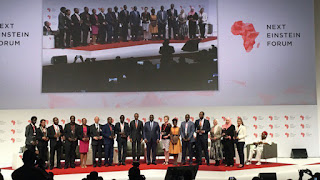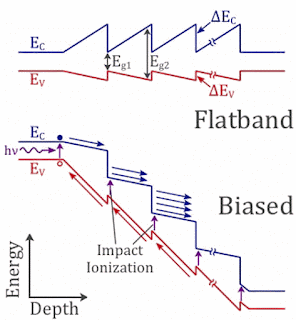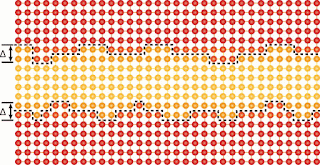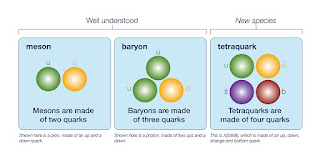Egypt, 1350 BC
I entered the sanctuary area at the back of our hut with a bowl of gazelle meat. Beside me my niece, little Nebet, hugged her miniature drum as if it were a doll. The likenesses of our forefathers and mothers watched our passage with painted eyes, their altars adorned with weapons and the gold flies their valor had earned them in life. But it was the gilded likeness of Sekhmet, she of the lion mask and blood-dyed gown, who awaited our arrival against the wall. Despite the dimming of the sunlight through our hut's narrow windows, Sekhmet's amber eyes blazed with the same fire that had emboldened generations of our ancestors.
Many times I had knelt before her as I did now, lighting the meat I laid at her feet. The scent of its burning recalled battle after battle of blazing tents and enemies being speared, shot, or cleaved into pieces. The warmth channeled the sun’s blazing heat, which glossed my dark brown skin with perspiration. Even the crackling of flesh breaking down into ash became the cracking of bones and shields as I yelled the battle roar of Sekhmet in my memories.
This evening I would consult our matron for a different battle. This time, our enemies were not Kushites with ochre-reddened hair and leopard-belted kilts. Nor were they easterners like the Hittites or Babylonians, with light-skinned faces and loosely curled beards. No, they were Egyptians like ourselves, fellow children of the Black Land who had fallen under the influence of the false Pharaoh Akhenaten.
Already they had dragged little Nebet’s father away to slave away in the lair that tyrant had built for himself and his cult of lies. I did not even want to guess what his minions had done to her mother. Only I remained to protect and teach the girl over the past year, and never would I let her suffer the same fate as her parents.
I gave her a nod and she pounded her drum with more unbridled passion of a temple ensemble. Together we sang our prayer for Sekhmet’s vigilance, for her guidance, for the courage with which she would imbue us in the face of war and persecution. The fire on my offering continued to flicker on our ancestors’ faces as their spirits’ voices joined ours in a greater chorus. The thumping of my heart became a rhythm complementing Nebet’s drum, as did the war drums that had thundered before all my past battles. Alongside the music’s growing fury there rose an energy within me that flamed as hot as Sekhmet’s gaze. As she opened her jaws to bare her fangs in my vision, so did I.
It built up from my breast to my throat, ready to be released over a climax of cracking drums and shrieking cries.
Instead came the hoarse bray of a royal trumpet. Then followed silence, and finally the rapping of a bony knuckle on our door.
Nebet embraced the drum with shivering arms. I murmured to her that it would turn out all right, for you could never tell a frightened child anything else. Even I didn’t want to believe otherwise.
Outside the door, as expected, awaited Vizier Ay with his leopard-skin mantle, accompanied by royal guards with spears and cow-hide shields. He greeted me with the usual sneer on his dark, wrinkled date of a face, and the night-black dreadlocks of his wig clashed with the scruffy white stubble around his mouth. But judging from the way his eyes ran up and down my figure, he had more than uppity pride spreading that filthy smile of his.
“Well, well, if it isn’t Egypt’s distinguished champion, Takhaet,” Ay croaked. “I understand you’ve earned yourself a whole swarm of flies, yet your beauty remains unworn after so much combat.”
I scoffed. “Most men say my beauty is enhanced by that. But maybe strong women are too much for you to handle, old Vizier.”
“Don’t you dare disrespect a servant of Pharaoh, young lady!” The Vizier spat into my face and banged his staff against the dirt road. “This business is so important, may I inform you, that defiance could cost you your very life---or your adorable little niece’s. Tell me, O Takhaet, was it to our Aten that you were praying to?”
If I were to lie, I could spare myself and Nebet whatever this ancient monster and his master had planned for us. But I could not deny our lyrics had named Sekhmet rather than Akhenaten’s pet demon. Nor could I deny that our drumming had spoken in her favorite rhythms rather than any other god’s. And even if it would save my family, I could never betray the men and women of my village by pointing to them. A painful truth was better than a lie that hurt others.
“No, but it’s neither your business nor Akhenaten’s! You can prostrate before that devil you call Aten all you want, but you can never claw out your subjects’ deepest beliefs, no matter how you try!”
The sneer returned to Ay’s face. “But I can silence them. And I have, many, many times. Why, I must’ve…disciplined more commoners like you than all the barbarians you’ve ever slain, Takhaet. But, this time I’ll be diplomatic.”
I was not surprised when I saw one shriveled hand of his glide back and forth over his crotch. That gesture wrung my stomach like a wet rag inside.
“I know what you’re thinking, withered son of a jackal’s bastard. And I could rip out what remains of your manhood with my bare fist!”
The Vizier stepped back, cackling like a sickly hyena. “Excuse me, I didn’t mean that kind of deal. I meant something that would strike closer to your heart. Get the child!”
One of his soldiers shoved me aside, by happenstance touching the back of my hip, and marched into our hut. Nebet screamed and flailed her arms when he yanked her up between his arms.
“Isn’t this a sweet, plump young piece of crocodile bait!” he said. “Hopefully they’ll leave one piece for my supper!”
“You savage!” I lunged after him, but one of his comrades wrapped his arm around my neck and pulled me away.
“So what shall it be, O Takhaet? Your little Nebet or your loyalty to dead gods?”
I could not allow my niece, all that remained of my blood-kin, to fall into the clutches of men viler and more wretched than any Babylonian or Kushite I ever slew. Too many children, probably thousands, must have already been tossed to the crocodiles at Akhenaten’s behest. If either her father or mother still lived, only knowledge of their child’s survival could keep them going. Caving into Ay’s demands would keep her alive. It would also further fuel his swollen Vizier’s pride and embolden him to seek out more victims, more children to threaten and kill. Sekhmet could never die, but both Nebet and all the other children of Egypt could.
I answered his dilemma with a kick of my heel into my arrester’s shin.
Breaking myself free of his chokehold, I tore the knife out from under his belt and chucked it into the brow of Nebet’s captor. My niece hopped and clung onto my back even as I caught the soldier’s fallen spear and used it to pole-vault over the rest. On the other side waited Ay’s personal chariot. After knocking the driver out with the spear’s butt, I grabbed the reins and whipped the horses into a neighing gallop.
Driving the chariots was always my favorite part of battle.
Huts, villagers, and trees blurred past me. The wind blew in a cool gale against my face. I couldn’t help but yell with girlish glee as I relived the thrill of a chariot chase, even with all its bouncing jolts and veers.
Nebet, much to my joyful surprise, squealed and laughed with me. “Can we do this again sometime, Aunt Takhi?”
“Next time he comes, I promise!” I said.
Our fun ended with the bang of a thrown spear against the chariot’s wheel. It threw us into the sky over the skidding horses until we crashed onto a hut’s thatched roof. Only by the mercy of the old gods did I catch Nebet before she hit something harder.
Ay’s thugs encircled the hut and hurled more spears at us. As I dodged their throws with Nebet on my back, I observed we had reached the village’s edge. Beyond the outer palisade sprawled a grassy field with scattered acacias, which in turn gave way to forest on the horizon’s edge. The shelter under those trees would be our only hope.
I picked up another spear and vaulted from the roof, over the palisade, and into grass that stretched higher than my knees. I sprinted as if I were racing a cheetah, but Ay’s cursing guards were closing behind me. My calves and thighs flared like a bush fire under my skin. A slung stone grazed my hip, but it made me stumble a couple of steps.
Ahead grazed a herd of wildebeest. I ran straight through them, and they scattered in all directions. I hoped their stampede would run over my pursuers, or at least that they would lose us among the panicking animals. I did not hear any men scream death cries, but neither did I see them behind me anymore. It was better than nothing.
I had burned away so much of my energy that evening that I slowed into a panting stagger upon entering the forest. I put Nebet down and collapsed into the low crotch of a sycamore fig tree, letting out a relieved exhale. The darkness under the treetops would be our sanctuary this night, because I had worn myself out for the day.
“Cower all you want in those woods, traitor!” Ay’s croaky voice, muffled as it was by the foliage, was unmistakable. “The leopards shall do our work instead!”
Nebet buried her head in my bosom like a baby nursing her own mother’s milk. Her teary eyes and cheeks reflected even the little waning sunlight that shafted through the canopy. “We’re never going back, are we, Aunt Takhi?”
I stroked her disheveled puffs of hair and gave her my most motherly smile, because I could not give her anything else. Not even a lie. “Only the gods know what lies ahead, my sweetheart.”
“But they failed us. Sekhmet failed us, they all failed us! That old guy was right, they are dead!”
“But his never existed. Why else would we be able to get away from him? We even killed at least one of his minions!” I wrapped my arms around my niece. “Besides, our prayer got interrupted. What if we were to finish it? This time, we’ll pray on behalf of all Egypt against Akhenaten’s oppression!”
“But we don’t have my drum. Or her idol!”
She was right, we could not go home to our hut’s sanctuary. And Akhenaten had robbed all the temples in Egypt of the gods’ likenesses in favor of that Aten monstrosity. Or rather, all the temples still in use. Egypt’s history, with all its chieftains and kings with their various works, ran many centuries further in the past than those. Many of those past works lay buried under wilderness like the forest around us.
“We may not need them,” I said. “I can think of something even better. And it shouldn’t be far from here at all.”
##
The white gaze of the moon, surrounded by innumerable stars, had replaced the sun in a blackened sky. Its light, faint as it was, guided me and Nebet through the maze of sycamore and palm trees. She tightened her grip on my breast with every bird squawk, monkey hoot, or coughing roar of the leopard. I myself felt cold serpents of fear slither up my spine despite the balmy humidity.
A twig cracked. Nebet yelped, and I spun around with hands clenched onto my spear. Across a nearby clearing bolted the shadow of a small antelope. Wait, once we had found what we were looking for, I might need that. With a singular throw, I managed to spear that duiker through the head.
“Is that for us?” Nebet asked.
“It’s for Sekhmet,” I said while hauling the carcass onto my shoulder. “Keeping hanging on there, little one. We’re almost there.”
From the corner of my eye I spied paw-prints bigger than most leopard tracks on the leaf-littered ground---tracks almost as big as a lion’s in fact. But lions were creatures of the open plain, not the forest, and Nebet had been scared enough times as it was.
We passed a vine-entangled falcon sculpture with a disc and a cobra mounted on its head. This was the likeness of Ra, the god of the sun which Akhenaten’s devil Aten tried to usurp along with all the other gods. Behind it a stout limestone obelisk towered up into the treetop canopy from a high slanted platform. Between them and the statue of Ra rose overgrown walls with a gatehouse bisecting them.
“This is a Temple of the Sun, like those built during the Fifth Dynasty,” I whispered to Nebet. “That would make it, what, over a thousand years old?”
“Whoah, that’s even older than Grandmother!” Nebet said. We chuckled together.
“It’s older than any of our grandparents, little baboon. Now these were built in honor of Ra, and was Sekhmet not born from Ra’s eye? We might speak to her through him!”
We pried open the temple entrance’s door and entered an open courtyard blanketed with undergrowth. The giant obelisk reared on its platform at the court’s opposite edge, with another likeness of Ra chiseled into its based. This time Ra was not all falcon but instead a man with a falcon mask who tread the python Apep underfoot. He did not watch his temple alone, but shared it with other animal-masked gods standing along the courtyard’s sides. I recognized Anpu the jackal, Sobek the crocodile, Hetheru the cow, Khnum the buffalo, Sutekh the aardvark, and Djehuti the ibis.
And then there was Sekhmet, she of the lion mask.
Her representation was over thrice the height of the one back in our hut. Not even centuries of erosion, or the creepers wrapped around her, could hide the glint of her ivory fangs or inlaid amber eyes. Under the moon, her glare blazed with more predatory brilliance than I had ever seen on her images.
“Look here!” Nebet had run over to a niche underneath the surrounding wall and was tapping on something wooden. “Drums!”
And she was right. Drums of all sizes had been cached in there, some as small as her own miniature one and others big enough for a grown woman like myself. My niece and I could drum together now!
I laid my duiker kill at Sekhmet’s feet and lit it with a makeshift torch. It blossomed into a huge ball of flame that made my previous offerings look miserly for the comparison. And with both Nebet and I holding drums between our legs, we recited our prayer with the full force of our voices.
All our ancestors must have been among the chorus that chanted with us, but the gods around us sang loudest of all. The beats came in many rhythms from both our drums, from my heartbeat, and from my memories. Entire armies thundered beside us, hooting and roaring, women shrieking and whooping like hyenas on the warpath. And as our larger offering crackled under the fire, so too did whole hordes of our enemies have their bones cracked and shields split asunder.
Again, it was building up from my lungs into my throat. I was ready to let it out like I never could at home.
What came was a roar. But not from myself, or Nebet. It wasn’t even Sekhmet’s roar, but that of a real, mortal feline.
There were three of them that had bounded into the temple’s courtyard. They were big and heavily built as lions, but had the hides of leopards, with two having spots and one a pure black coat. The larger of the spotted ones had a short mane like a young male lion’s. I had heard stories of rare crosses between lions and leopards, but had never seen one in all my hunts. Never mind a pride of three!
Blocking the way between Nebet and these half-bred cats, I jabbed my spear at them with a hiss and snarl. The male of the trio bared his fangs and answered with a deep, coughing roar that froze my flesh to the bone. At his sides his mates crouched, rolling their shoulders with glowing green leopards’ eyes on my niece.
We were outnumbered, but even I could not outrun half-lion, half-leopard felines in the woods at night. All I could do was teach them the fear of humanity. So I chose to charge them head-on.
The male cat met my challenge with the lightning quickness of his leopard parentage and the lion’s brute might. He had me pinned back-first under his paws, the weight of his muscles nearly crushing mine. He would have split my bones had I not gotten one stab of the spear into his flank. It did not fell him, but in his roar of pain he relaxed his pressure enough for me to roll free.
I jumped to make another thrust, aimed at his skull. Again his mixture of lion’s strength and leopard’s reflexes defeated my attack with a swat of his paw that took off the spear’s bronze head. The sudden force of his blow threw me off my footing into one of the statues’ bases.
Nebet’s scream of terror and pain pierced into my heart as well as my eardrums. The spotted female cat had already caught her by the skirt in her fangs! I threw my decapitated spear into the beast’s shoulder, saving my niece from the crunch of death, but the male of the pride had sprung for me. I darted out of his way, letting him collide with the statue behind me, and put Nebet onto my back. I beat away the spotted female half-breed’s next attack with the duiker’s charred corpse and hurried for the temple entrance.
From the head of another idol, the cat with the pure black coat shot down paw-first in my way and slashed its claws across my breast. I reeled back until all three of the pride were circling us like vultures over a kill. I had been a fool. There was no way to beat these cats in battle. The best we could do was break out of their trap and shut them in.
After one kick into the male half-breed’s face, I rushed past him through the entrance’s doorway. Together with Nebet, we slammed the old door closed. Though it throttled back and forth with the felines roaring behind it, the hard wood it had been hewn from withstood their attacks with resilience belying its antiquity.
I scooped my whimpering niece up and mumbled thankful prayers that the night’s violence had not inflicted fatal damage on her. “It’s all right, my sweetheart. We’re safe now.”
“Not any longer, O Takhaet!”
Ay and his squadron of soldiers had found us after all! Ringed by all their spears and axes, I had spent too much energy to defy them any longer.
“This time, I’ll make it simple. Surrender your dead faith or die!” Ay’s sneer had widened to an open grin of malevolent joy. “Choose rightly, and we’ll bring you home and act as if this never happened!”
It would have meant defeat for my cause, for the traditions I and all the people of Egypt had followed before Akhenaten’s ascent. But Sekhmet and her brethren had failed us twice. No, if those three half-lions were any sign, she must have turned on us, never mind all that we’d done for her. And as long as my niece’s life was no longer at stake, it no longer mattered whether we swore by Aten rather than the gods who had deserted us.
“How about this, old man?” It was Nebet who spoke. Not even the tears in her eyes could extinguish away the determination in them. “You tried to kill us, so why don’t we do the same to you?”
She tugged the handle on the door. I helped her, and we ran straight through the confused soldiers the moment it banged open again.
The clamor of feline roaring, splintering spears and shields, and the screams and death cries of men echoed between the trees. So did our laughter together.
“You are a clever little baboon, aren’t you? How’d you hatch that one so quick?”
“They came when we prayed to Sekhmet. She must’ve summoned them for something. And besides, you used wildebeest on those men earlier.” Nebet was beaming with the fierce pride of a triumphant warrior, a beam I had shown myself many times in my career. Like aunt, like niece.
“All right, you win!” A gagging Ay, with wig fallen off and a blood-sprayed leopard-skin mantle, had tripped off his cane behind us. “I’ll tell Pharaoh you surrendered, and have your whole village left alone. Truth be told, that bloated fool would rather laze around in his new ‘palace’ than run his kingdom as he should. Sole representative of Aten’s will, my smelly wrinkled ass!”
After helping him up, my niece and I nearly exploded from the hilarious irony of it all.
##
When we returned to our village after daybreak, the people welcomed us with cheers, hoots, and songs of praise. The headman thanked us for driving back the tyranny of Akhenaten and his false god, promising to reward us with the greatest feast the village had ever known.
And so it was held that evening. Hundreds of drums cracked and rumbled as we roasted whole cattle and antelopes in Sekhmet’s honor, firelight dancing to the many rhythms. Hundreds of men, women, and children sang her praises, adding to the drumbeats with clapping, stamping feet, and the banging of spear butts and walking sticks. This time, I did not need memories or imagination to enhance the music. It was real, it pulsed all around me, and it even made me dance beside the flames.
Finally I could let it flow from my lungs, up my throat, and out of my mouth. And for once, it was my own voice from whence came the battle roar of Sekhmet.












